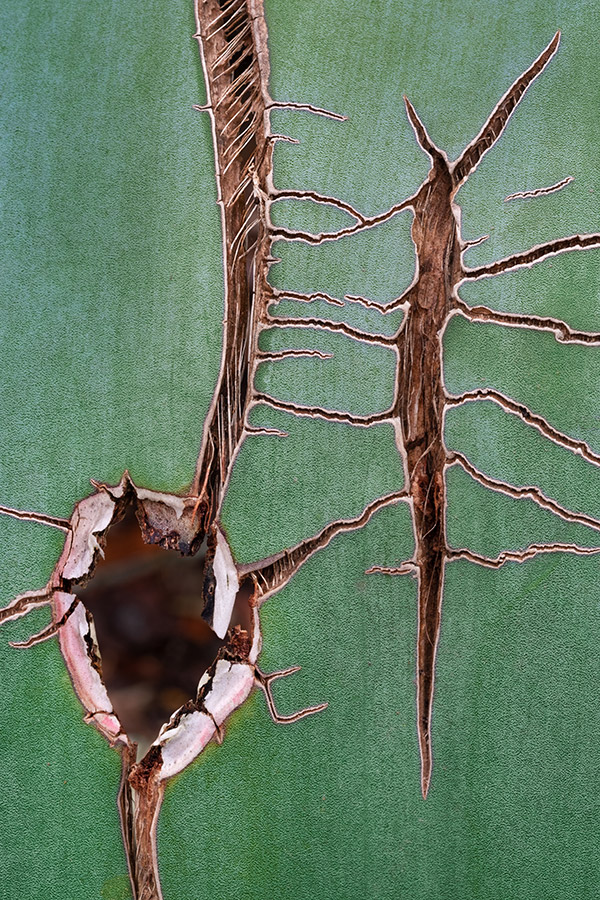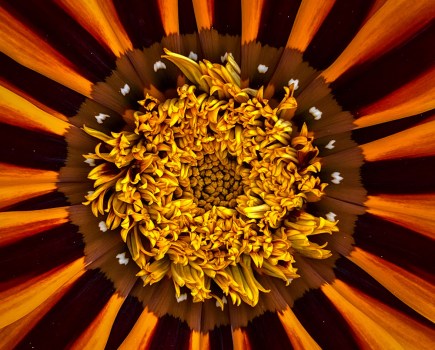Exploring the ‘language’ of plants using a macro lens resulted in an award-winning photo series for Tracy Calder. She shares the story behind her Plant Scars project, along with some tips and tricks for creating a successful macro portfolio yourself
As a writer and storyteller, I’ve always been interested in language. Looking at how signs, symbols, drawings and alphabets have helped us to communicate with each over the centuries is a source of great fascination to me. If you look at the pictorial ‘writing’ used by the ancient Egyptians – drawings of feathers, eyes, beetles, trees, lotus flowers etc – these codes for speech and thought seem a million miles away from our modern-day language.
But if you look at the washing label on your favourite jumper, is the drawing of the tumble dryer with the strike through it not a hieroglyph of sorts? You can see examples everywhere: at the side of a motorway, on your phone and, of course, on the buttons, dials and menu systems of digital cameras. When speed is of the essence, sometimes a picture or symbol reaches the brain quicker than the written word.
Setting the seed
When I was around nine or ten, my mum handed me a little book called The Language of Flowers. This lovely hardback was filled with beautiful paintings and handwritten notes. Each note revealed the flower’s ‘meaning’ (some were traditional, others were made up by the author). Almond, for example, stood for stupidity or indiscretion, while Christmas rose meant cheerfulness under adversity.
I was smitten by the idea that flowers could talk, or at least serve as a conduit for thoughts, emotions and feelings. Years later, I came across the book Nymans Language by John Newling. This wonderful object celebrates Newling’s work around language and gardens. Like me, the artist believes that language can be more than just written words or speech. For him, the colours and shapes in a garden create, ‘A kind of natural language that is shared by many people.’

As the leaf of the agave bent over, the weight of it created a tear I found striking 1/12sec at f/20, ISO 200
Finding the right language
In June 2021, when the first coronavirus lockdown ended in the UK, I paid a visit to Ventnor Botanic Garden on the Isle of Wight. This location has provided solace for me many times – I swear there is some sort of magic in the ferns, palms and herbs there. Walking through the Arid Garden (home to desert-loving plants like agaves and aloes), I spotted the leaf of an agave drooping over the path.
There was a gash in the leaf, lined with tooth-like notches. Just above it was a patch of circular damage that looked like some sort of all-seeing-eye. At that moment, the seed of a photographic project started growing in my mind. As I stood in the shadow of this beautiful, but damaged, plant I wondered if it had its own language, and whether there was anything I could learn from it.
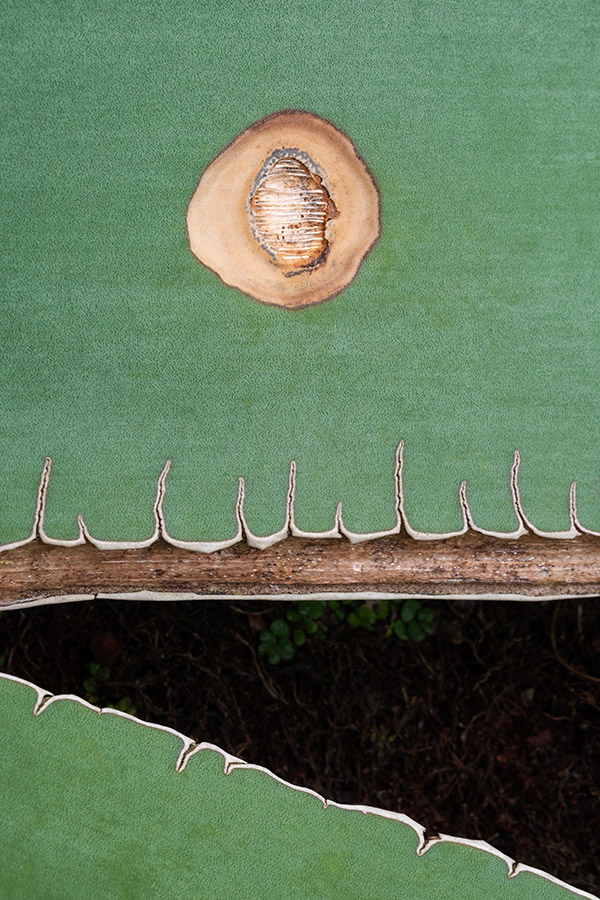
Seeing this ‘Pac-Man’ leaf made me laugh and sparked the idea for the Plant Scars project
1/7sec at f/20, ISO 200
Deciding on the parameters
If I was going to create a coherent set of pictures, I knew consistency was key. I wanted to use natural light, so there was no point making multiple trips to the garden and just hoping that the conditions would be the same. Everything in nature is in flux, so unless I wanted to spend hours trying to ‘fake’ things on the computer I needed to shoot all of the pictures under the same conditions.
Having taken a few recce shots, I decided to head for home and draw up a plan. My first job was to set out some parameters. Firstly, all the images needed to be taken on the same bright, but overcast, day. Secondly, they all needed to show scars, gashes, holes, blemishes or tears. Thirdly, each one had to feature the same species of plant from roughly the same section of the garden. Finally, all of the images needed to be taken with the same camera and lens. Ultimately, I knew that limiting myself like this would encourage me to be more creative.
Gaining access
Like so many people, I’m still waiting for Sigma to release a macro lens for my Fujifilm X-T2, so I decided to borrow a Fujifilm XF 80mm f/2.8 Macro lens via Fuji’s loan service. With the weather checked, the ferry booked, and an overnight stay secured, I set off. In the morning, I awoke on the island to witness a glorious sunrise: bands of orange and pink filled the sky and every time the wind nudged the plants out of the way I caught sight of a calm, blue sea.
I had purposefully hired a cabin in the Garden itself, which meant that I had access to the site a few hours before it opened to the public. This turned out to be a wise decision – by 6am I was kneeling on the ground framing scars and tears, while red squirrels and wall lizards scuttled around in the leaf litter nearby.
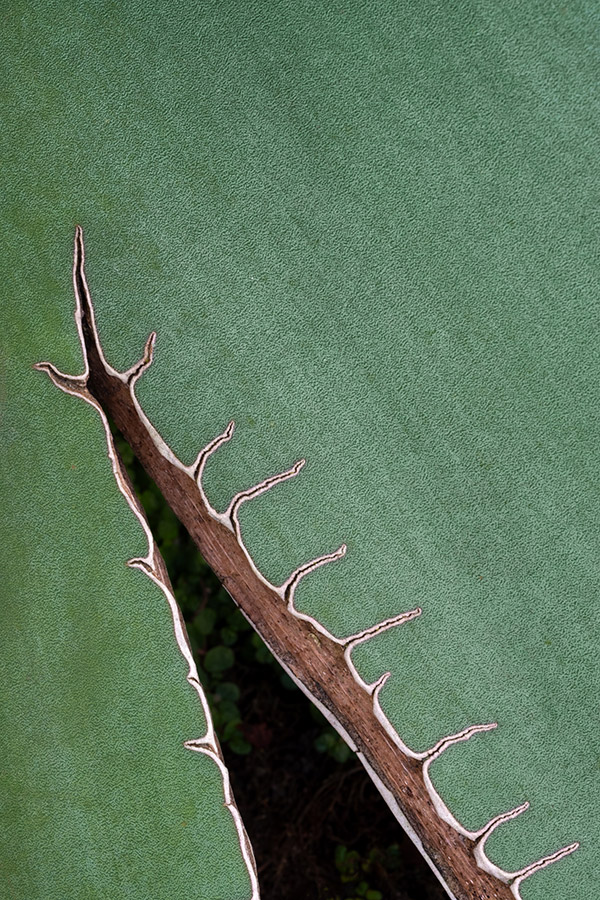
I walked around the garden looking for a tear that might serve as a pause point in the series
1/8 sec at f/20, ISO 200
Overcoming the challenges
Straight away I was met with a few challenges. When you’re shooting with a macro lens just centimetres away from your subject, depth of field is extremely narrow. Most of the leaves looked flat to the naked eye but having reviewed some of the early shots I noticed that the focus was falling away rapidly with every bend, twist and undulation.
To solve the problem, I decided to focus stack some of the scenes. This involves shooting multiple frames – each concentrating on a slightly different focal plane – before blending them in-camera (if your particular model allows it) or via software such as Zerene Stacker.
The next challenge was far less technical: every time I found a leaf with an interesting mark, tear or scar it seemed to be in the most inaccessible place. This is when being a yogi comes in very handy! For a few hours I contorted myself into unsightly shapes and positions, all the while trying not to get stabbed in the head by the sharp spines lining the tips of the leaves.
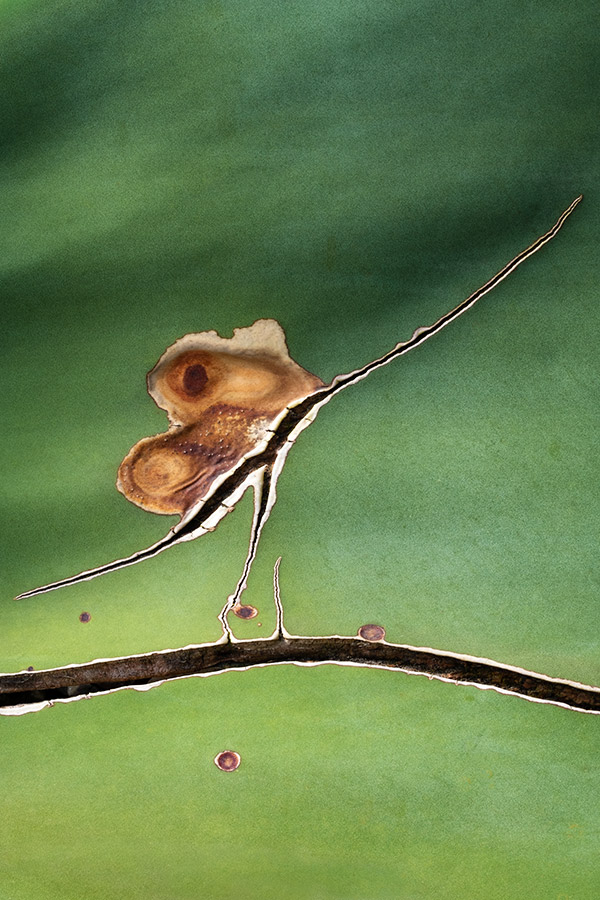
This mark in the leaf made me think of a butterfly balancing on a tightrope 2.3 sec at f/16, ISO 200
Submitting a portfolio
I spent the morning covering just a few metres of the Arid Garden, but was reasonably happy with the variety and consistency of the pictures. I chose six of my favourite images and submitted the portfolio to the RHS Botanical Art and Photography Show. To my surprise, my efforts were rewarded with an RHS Gold medal.
After everything we’ve been through in the last few years with Covid, this series seemed to strike a chord with the judges. For me, it was a cathartic exercise – it was my way of celebrating the knocks we endure as living beings and, ultimately, the ability they have to transform us. For me, scars are markers of progress, reminders of what has been endured and what may still be endured.
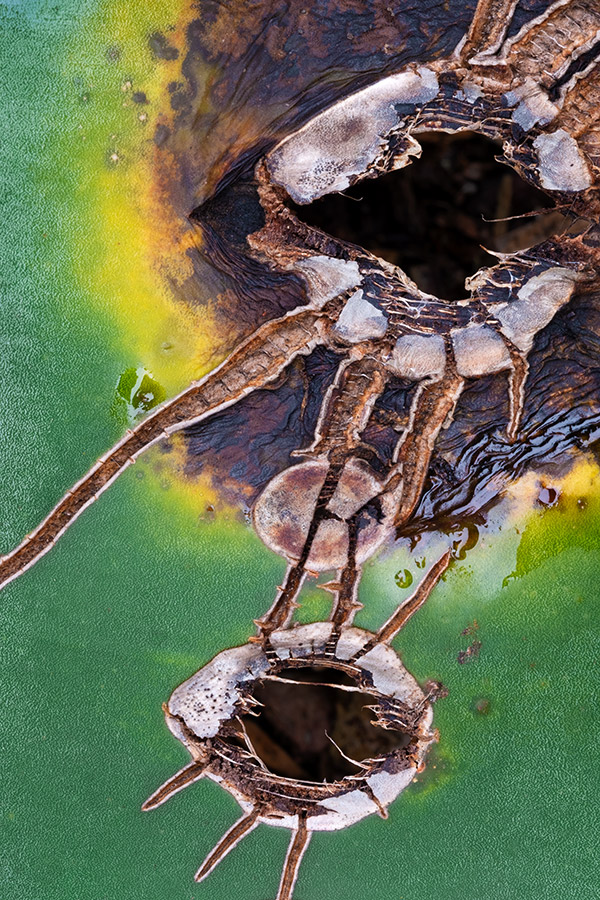
Bizarrely, this image was inspired by a ceramic tile I saw at the V&A in London 0.6 sec at f/22, ISO 200
Kit list for creating a macro portfolio
Macro lens
All the images in the Plant Scars series were captured using a hired Fujinon XF 80mm f/2.8 R LM OIS WR Macro lens. This hefty bit of glass offers 1:1 (life-size) magnification and has a minimum focusing distance of 25cm.
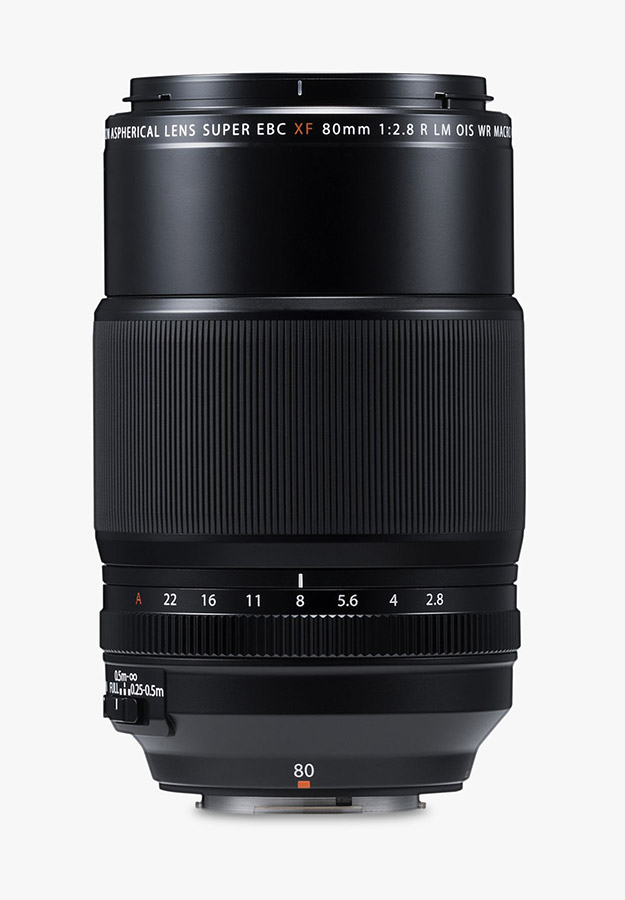
Tripod
Leaves with the most interesting marks and scars always seem to be in the most inaccessible places. To give you more flexibility, try using a tripod with a central column that can be positioned at 90°. I use a Manfrotto 190CXPRO4.

Tweezers
When you’re shooting close-up subjects, any dirt, stray leaves or fine threads can be distracting. If you want to save yourself valuable time on the computer, use a set of tweezers to tidy things up while still on location.
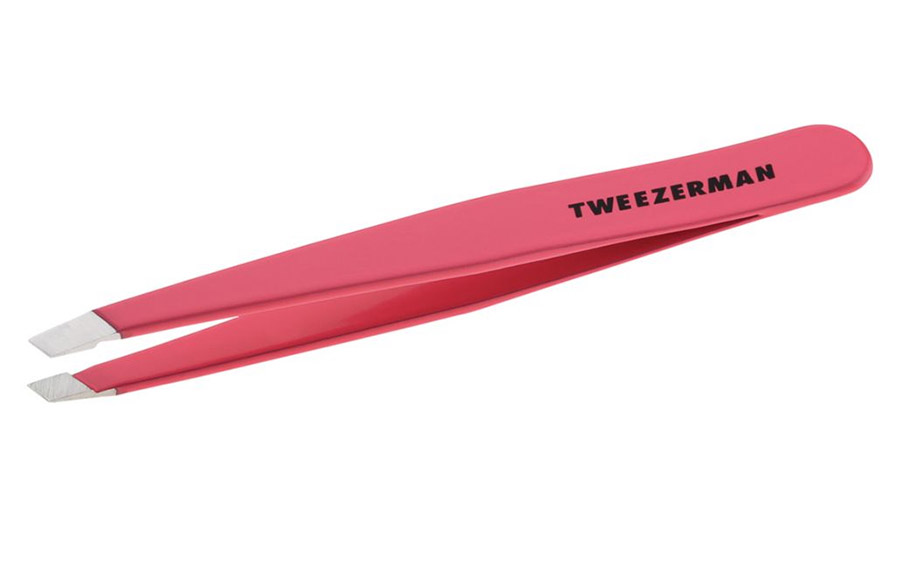
Kneeling pad
Some of the best macro subjects seem to occur close to the ground, which can lead to wet (and painful) knees. To alleviate this, pack a lightweight kneeling mat. A basic foam version will do the job so don’t spend lots.

10 top tips for creating a successful macro portfolio
- Look beyond photography. While I was researching the Plant Scars project, I looked at books on writing, calligraphy and even Islamic tiles.
- Consider the link. The images in your series need to be linked by more than subject matter. It might be colour, technique, style or just a feeling, but the link needs to be obvious.
- Get physical. When you’re choosing or sequencing images, it helps to print them out, move them around and live with them.
- Define the purpose. Some competitions ask you to submit a statement of intent. You might have no intention of sharing your work, but it can help you to define the purpose, aims and objectives of your project.
- It’s okay to change your mind. If you decide to enter your project into a competition, check that you can swap or add extra pictures right up to the deadline.
- Ask your trust circle for feedback on every image. But only seek opinions from people that you trust and respect.
- Consistency is key. If you have to shoot your images on different days, or under different light conditions, you need to address this in post-production. Bring copies of the pictures you took earlier to all of the shoots so you can compare.
- Sequencing matters. If you want to display your images as a body of work, the order (or arrangement) matters.
- Every picture counts. Your images need to work as a set, but they also need to stand alone. Weaker images will reduce the impact of your series.
- Enter a competition. It can give you the incentive you need to start a photo project.
Tracy Calder
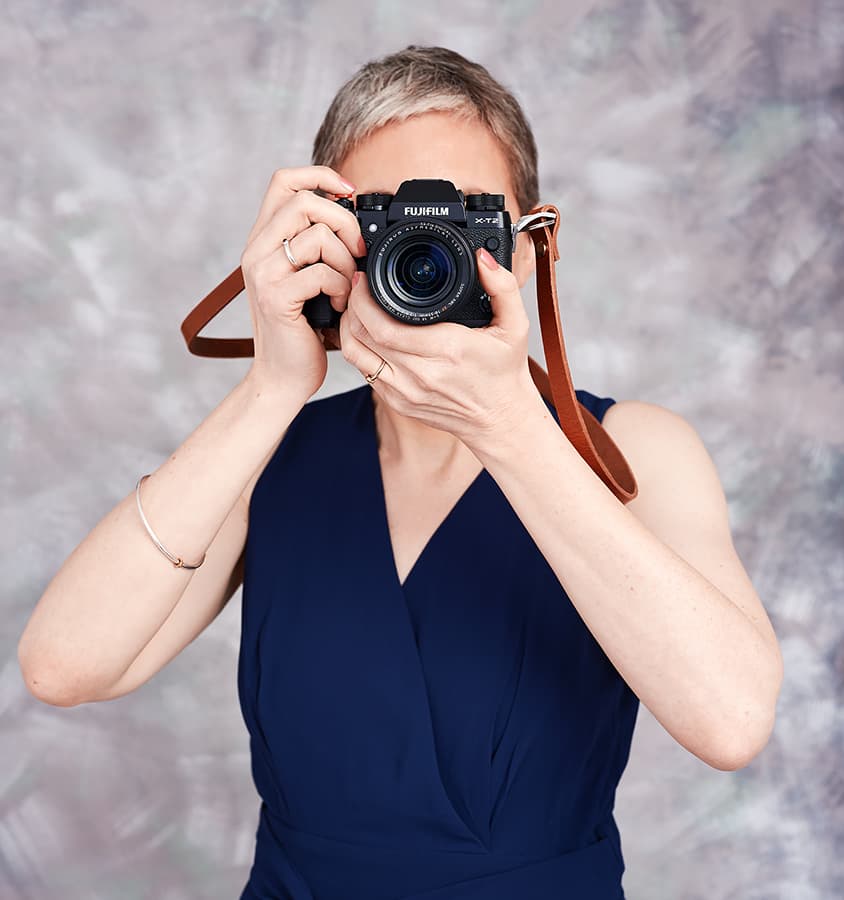
Tracy Calder is a former AP staffer who co-founded Close-up Photographer of the Year (CUPOTY) in 2018 – an annual competition celebrating close-up, macro and micro photography. Her work has been exhibited at The Photographers’ Gallery, the National Portrait Gallery and Saatchi Gallery. To see more visit Instagram @tracy_calder_photo and www.cupoty.com
Related Reading:
Best photography competitions to enter in 2022
Beginners guide to Macro Photography – How to create great macro photos
30 common macro mistakes and how to avoid them


